faceted mirror with rubble frame
H 117.5 cm W 86.5 cm
€ 1.600,00
Prijs incl. 6% BTW & Verzendingskosten
Meer informatie
A robbel list is a straight profile list, with a regular, vertically corrugated gradient. This ornament from the seventeenth century has been mainly applied to furniture and picture frames and is often made of ebony. A robbel frame can be made from many different materials. The robbel list probably originated around 1600 in Nuremberg, one of the most important cities for German arts and crafts at the time. The technology has spread from there to Augsburg. In this place, the list was popularized in the twenties by the furniture maker Ullrich Baumgartner and spread to France, Austria and Italy. Around 1630 the technique was also practiced in northern Germany and the Netherlands. For the Dutch, ebony was a coveted luxury material that was imported from the tropics and was only available sparingly in Europe. In East Africa (Mauritius), India (Sri Lanka, Coromandel Kust) and Indonesia (Moluccas) it was different, where the wood grew naturally and when the Dutch arrived there they immediately proceeded to exploitation. The wood was shipped to the motherland but also to the Dutch trading posts in Asia and Batavia where craftsmen were employed by the VOC. As in the so-called ‘craft quarter’ in Batavia, a certain district where these slaves from various parts of India worked under the supervision of Westerners on luxury furniture for high-ranking officials of the VOC.In the second half of the seventeenth century, technology was spread throughout the continent. After 1700, however, the robbel list is already out of fashion and is replaced by flat profile frames, ornamentation from the rococo and various veneer techniques.. Around 1850, in the time of the neo-styles, the robbel list was again manufactured in limited numbers. These frames are characteristically more angular, sharper and often have deeper undulations than seventeenth century frames. The robbel frame is not planed, but scraped. When planing, the chisel is placed at an angle of 30 to 70 degrees. When scraping, the chisel is placed on the workpiece at the 90-degree angle. By increasing the angle, less wood is freshened, but the wood also tears out less quickly. In addition, the desired shape can be better followed. When the chisel is at a lower angle, the wave movement cannot be properly applied in the wood because the chisel tends to shoot over the comb.
We present a very nice large rectangular cut mirror with a beautifully elaborated ebony robbel frame and enriched with a light brown turtle veneer. The condition of this furniture is excellent. The faceted mirror probably dates back to the end of the second half of the 19th century. Masterpiece!
Condition : some hairlines in the ebony at the top but otherwise perfect.
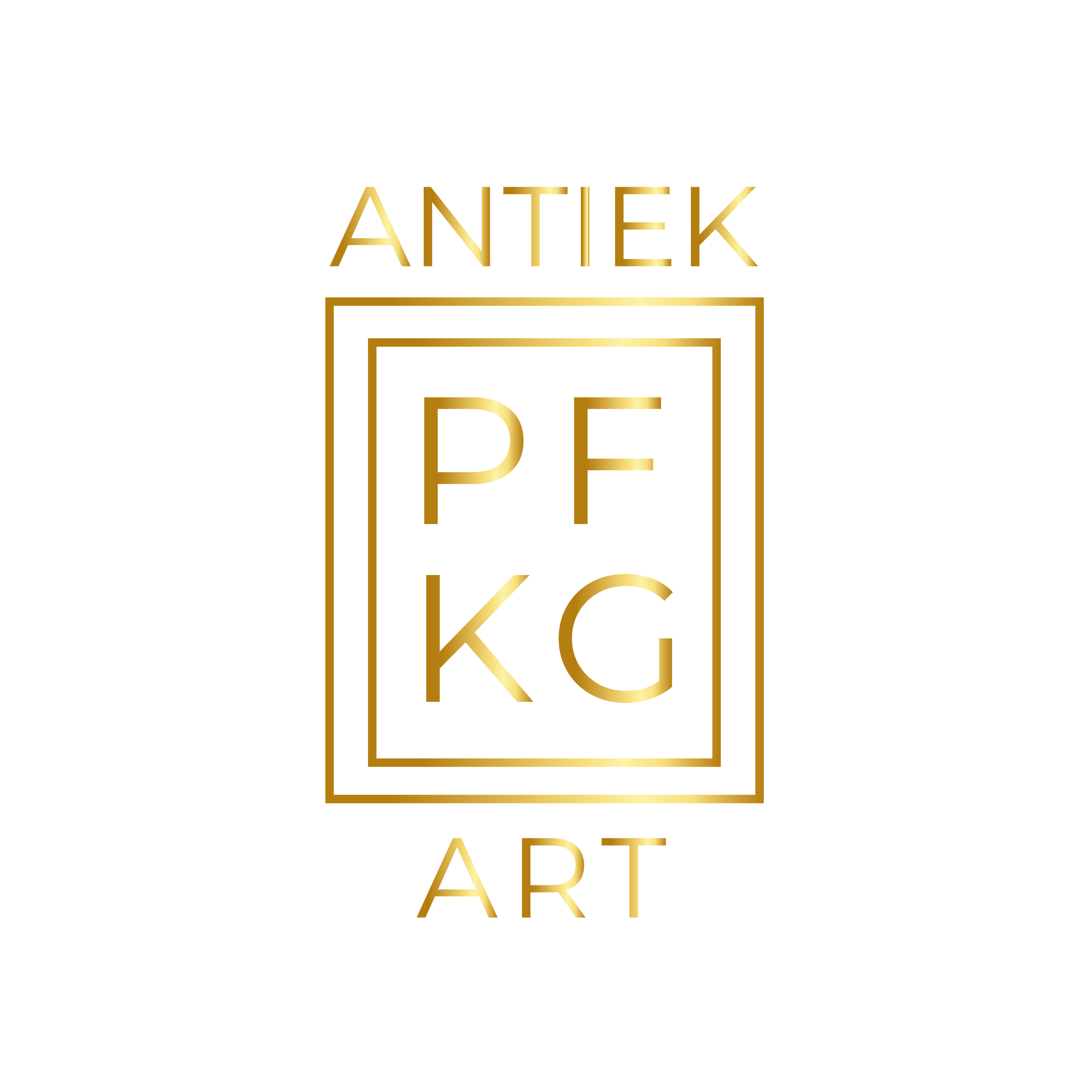
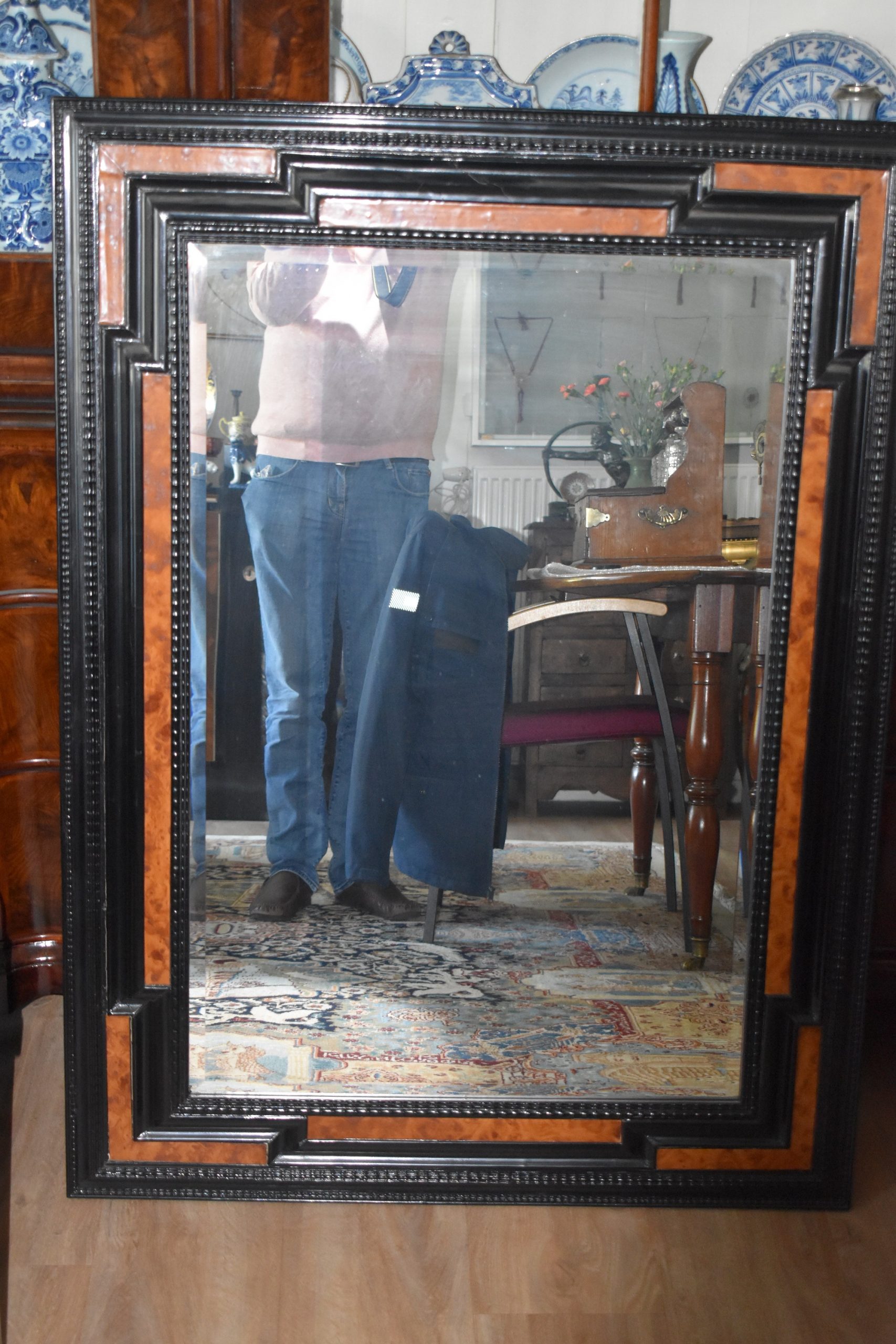

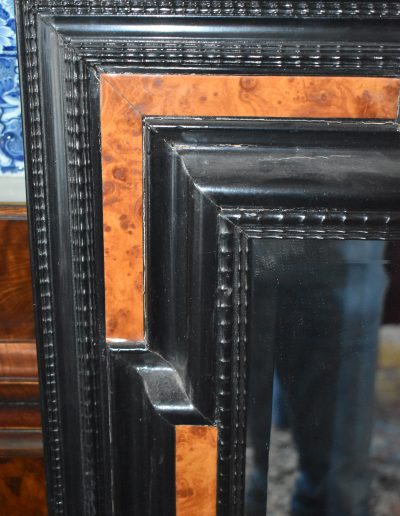
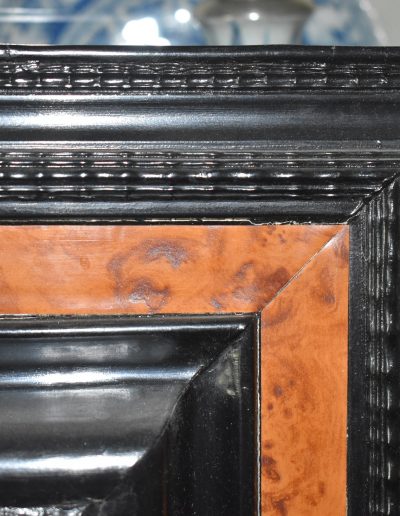
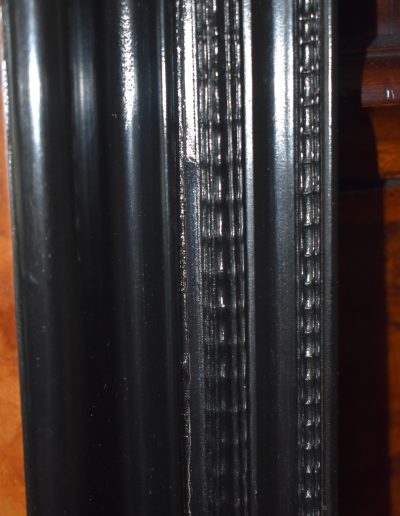

Reviews